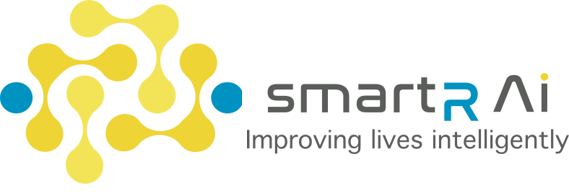This week I had the opportunity to ask Oliver King-Smith (our founder and head engineer) for smartR AI’s secret: how it trains its AI models. Although I was aware that the process of coding is rather complicated, I still hoped the answer might come in a simple form, like a family recipe. As it turns out, it’s not that simple and not that secret (as smartR AI’s coding practices falls in line with a lot of industry standards). However, I will strive to translate the complicated process of training AIs into a recipe-like description that us non-coders/engineers can comprehend.
The first step to training an AI model is to determine what you are cooking – I mean coding. You must determine what purpose your AI is to have, what type of AI would be appropriate to meet that purpose and therefore, which type of training process would be most appropriate. Oliver describes how the following three training processes can each be used to meet different purposes:
-
Train AI from Scratch
Training an AI from scratch is most appropriate for programs which need to be highly specific and customizable. In this case data sets are built up; the data set is then cleaned and the best model for the job is selected. Once this has been done, there is a lot of tweaking involved to try predict what is happening with the data. e.g. smartR AI’s alertR
alertR is a behavioral intelligence-based alerting system providing speedy support and assistance to protect vulnerable individuals. smartR AI trained alertR from scratch as it required highly customized features. Through the data it received from its sensors, alertR had to be able to determine whether an individual was taking a pill which changed their biometrics, whether they were sat at a desk typing, whether they were texting etc.
-
Re-train parts of an existing AI
In this case an existing model is selected and it is re-trained. Often, certain sections targeting particular functions are isolated and can be trained from scratch, removed or edited. e.g. Visual processing
smartR AI is currently working on a project involving the development of an AI program which could help to detect issues with train tracks, this involves visual processing. smartR AI is re-training an existing program to create a more specialized and purpose-built AI.
-
Polishing an existing AI
When it comes to Large Language Models (LLMs) they are highly expensive and time consuming to train. Polishing or tuning these models to a company’s or individual’s specific needs can make LLMs more accessible and customized. smartR AI uses a common-place technique called low-rank adaptation (‘LoRA’) to achieve this.
When we want to get the style and tone of generative AI to follow a particular standard, e.g. for personalization, using LoRA is really effective. For example, we have retrained Mistral 7x8B models to give them a voice and language that would be expected in Australia. These nuances can make a big difference from making the output seem a little off, to sounding natural.
Cost is another factor important to consider in determining which training technique is most appropriate for the AI you are seeking to build. Training an AI from scratch can be very expensive and require a lot of manpower. Even perfectly fine tuning an LLM could require 4-5 months’ work from one engineer. Companies like OpenAI and Google have been claiming that to create their LLMs from scratch, it has cost them several hundred million dollars. Therefore, it’s advisable to consider how customized you need your AI to be.
For particularly specialized AI models, you should also consider that outside expertise may be required. Such as in healthcare applications, expertise is needed in curating the data and selecting which health records should be used in which applications. Not to mention the external expertise required in monitoring the outputs of the AI.
Oliver says “We could look at the output and say that looks fine to us, but it’s the healthcare practitioners that are the ones to tell us if it works or not”.
Therefore, training AI is no simple feat. Investment, expertise and many hours of training (no matter what form it takes) is required to produce a good AI. This has been a short and simple guide to the basics of how smartR trains AIs, if you would like to enquire further please contact someone from our team by clicking here.
Written by Celene Sandiford, smartR AI

